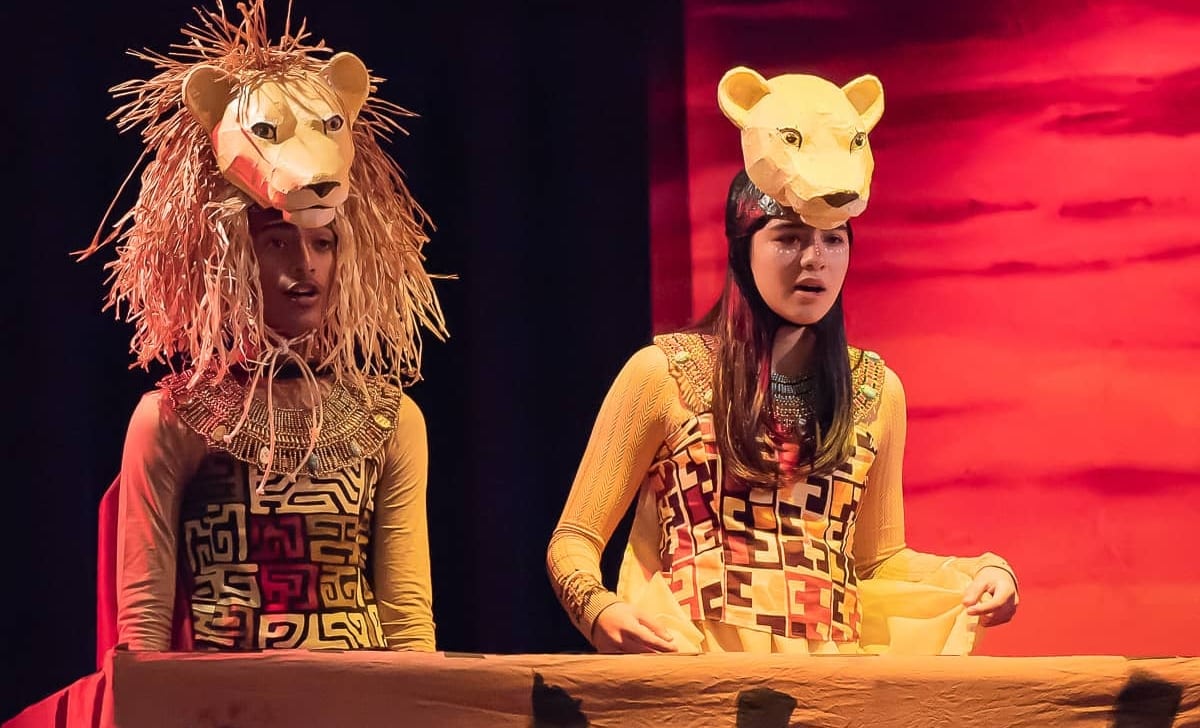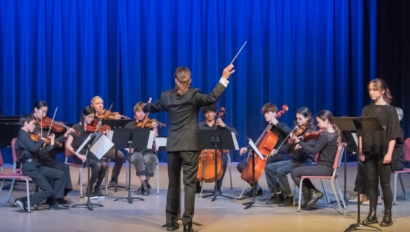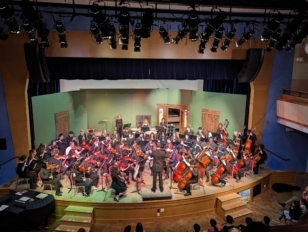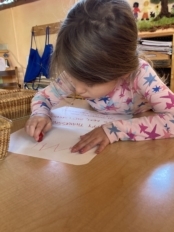A Waldorf education is based on a unique picture of child development. From birth to 7, 7-14, and 14-21, and at each year within those ranges, a child needs something specific. Guided by a time-tested curriculum that offers a roadmap developed over 100 years ago by Rudolf Steiner, which we continually adapt to the needs of today’s students, the work of our teachers is to see who the children are in each moment, and provide the concepts, stories, environments, and activities that will best serve them, drawing out their individual perspectives and talents and encouraging them to love and be interested in the world, now and throughout their lives.
Kindling love for and interest in the world is never more important than during the tumultuous middle-school years.
Kindling love for and interest in the world is never more important than during the tumultuous middle-school years. Adolescents are changing fast, full of feelings and questions, and in need of warm, caring adults around them to help them stay grounded and focused amidst all the inner and outer transformation they are experiencing. Here’s just some of what we offer students at Green Meadow Waldorf School:
Morning Lesson
In grades 1-12, each day at Green Meadow begins with a “morning lesson”. This period around one hour and 40 minutes each day allows students to study an academic subject intensively, in a block that lasts three to four weeks, allowing for an in-depth examination, and deep integration of the material. Middle school Morning Lessons include:
-
Anatomy and Physiology
-
Physics of Light
-
Astronomy
-
Chemistry
-
Geology
-
Business Math
-
Platonic Solids
-
Perspective Drawing
-
Revolutions
-
Ancient Empires
-
History of the Middle Ages: the Rise of Islam and Christianity
The students also study:
Language Arts
In grades 6-8, students are writing research papers and essays. By 8th grade, they are discussing books such as The Autobiography of Frederick Douglass and A Tale of Two Cities.
Mathematics
In middle school, students become comfortable with the fundamental language of algebra before entering High School. Our holistic approach extends to the math curriculum in many ways. Students learn about fractions while learning how to read music, with its whole and half notes. Lessons on geometry include biographies of early geometers and ancient cultures, and students learn to use a compass and straightedge to make geometric constructions and proofs. Correlations with art, architecture, business, and culture are explored, whether students are developing their own small business to raise funds for a local charity, or working to understand how the golden mean relates to ancient Greek temples. Math explains the world around us, and our teachers keep this connection alive for our students.
Math explains the world around us, and our teachers keep this connection alive for our students.
The Sciences
Formal studies in the sciences in middle school include Astronomy in 6th grade, and Human Physiology, Anatomy, and Chemistry in 7th and 8th grades.
Geography, Culture, and History
World history begins in 5th grade, when students learn about the Golden Age of Greece, the Persian Empire, and the meteoric rise of Alexander. These studies continue with the empire of Rome and its contemporaries in Africa and Asia, the Medieval period, the Renaissance and the Age of Exploration, and finally, in 8th grade, the Age of Revolutions and modern history. The study of geography continues in 8th grade with the geography of Africa or Oceania, until students have studied all of the earth’s surface by the end of middle school.
The Arts and Drama
Alongside this rich academic curriculum, the students draw, paint, memorize poetry, and perform plays. Each class performs a play every year, culminating with a full-length play in the 8th grade. Recent plays/musicals have included “A Midsummer Night’s Dream,” “Fiddler on the Roof,” “West Side Story,” and “The Lion King”. By the time a student has reached 8th grade, they will have acted in many roles and helped with set design, lighting, and costuming.
Subject Classes
In addition to the creative learning taking place in the academic subject areas, subject classes, taught by a core of talented teachers, round out the curriculum. Students take classes in Spanish and German from 1st through 8th grades and continue their study in High School, where a majority also choose to go on an international exchange. Students also develop strong, coordinated bodies and spatial awareness in movement classes like Games and Eurythmy. They learn to knit, crochet, felt, and sew in weekly Handwork classes. They will carve bowls, make wooden toys, and explore the medium of clay in middle school Practical Arts classes. All students sing and learn various instruments in Music and Orchestra classes, and also take up a string instrument beginning in 3rd grade orchestra. They may later branch out into any band or orchestral instrument in 5th grade.
Curricular Trips
Beginning in 3rd grade, each class goes on an overnight trip each year. They enjoy camping trips, where they canoe, hike, raft, stargaze, and use survival skills. Classes in the upper grades often take field trips to Boston; Washington, DC; and Philadelphia, focusing on the rich history of these cities. Teachers have the freedom to schedule trips that enrich the social fabric of the class, such as 8th and 1st graders ice skating together at Bear Mountain, or trips that deepen a class’s study of the curriculum, such as trips to observe and draw the Hudson River in a study of local geography. We are privileged to take advantage of our close proximity to New York City: classes can tour the New York Botanical Gardens, hear Gregorian chants at the Cathedral of St. John the Divine, visit museums, and much more.
As a unique school with an “uncommon core,” we are proud to see our students go on to become scientists and craftspeople, artists and musicians, writers and mathematicians, dancers and athletes, linguists and actors. They receive a Renaissance education, which develops a wide range of skills and imparts knowledge of an impressive array of subjects. The broad and deep experiences students have at Green Meadow give them the freedom to choose what they wish to pursue in college and beyond.



